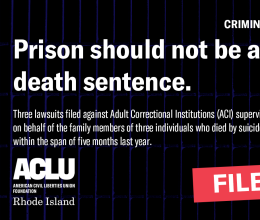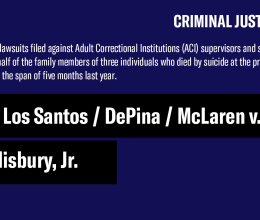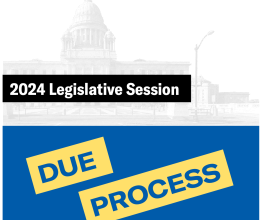By Megan Khatchadourian, Assistant to the Executive Director
Last summer, most of America became familiar with the Department of Defense’s 1033 program that allows for the transfer of surplus military equipment to local police departments. What most of us were unaware of was that this program was not new, and in fact has been in place since the early 1990s. Faced with a growing surplus in the wake of the first Gulf War, Congress penned the first National Defense Authorization Act (NDAA) creating what became the 1033. What we’ve seen since its inception has been a noticeable shift from traditional police training, to a more tactical training. The Barney Fifes we grew to know and trust have transformed into urban soldiers with military fatigues, and paramilitary training under their belts.
Shortly after the events of Ferguson, President Obama called for a review of the 1033 and other federally funded programs that allow for the acquisition of military equipment. Fast-forward to May 2015, and President Obama’s announcement of a newly implemented ban on certain types of military equipment.
Now that the dust has settled, and we’ve had a chance to actually review President Obama’s ban on some military equipment local police departments are able to procure through the 1033, and other federally funded programs, let’s actually talk about what this “ban” does and doesn’t do. And let’s take it a step further, what does it mean for us here in Little Rhody?
Let’s start by breaking down the President’s ban. In his remarks from Camden, New Jersey, the President unveiled the new restrictions on equipment that LEAs can acquire through federally funded programs. The thought behind this restriction came from discussions and research that showed the elevated risk of overuse or misuse of this equipment in situations leading to a growing trend of mistrust of the police within communities. So what’s on the “banned” list you ask? Tracked armored vehicles, weaponized aircraft, vessels and vehicles of any kind, firearms and ammunition of .50 caliber or higher, grenade launchers, and bayonets. Ok, you’re probably thinking this is a good start, and these are definitely things that LEAs shouldn’t have a need for. At first glance, that was the thought most people had – that is until we all dug back into our local 1033 files.
(Keep scrolling to see an infographic we made depicting the number and types of weapons Rhode Island police department have--or at least the ones we know about)
As this NPR article points out, nationally these new regulations would have little to no effect on the arsenals that LEAs have. Let’s look at the ban on weapons or ammunition of .50 caliber or higher: the 1033 program did not distribute a single weapon that would fit into that category according to data from the Defense Logistics Agency that oversees the distribution of this equipment. What does that mean? That means that the 84,258 rifles that were distributed can all be kept. That means those M16s and other assault rifles we’ve all seen in pictures can still be used. What about those “tracked armored vehicles?” Surely there has to be some of those out there. Not really. Most of the armored vehicles that have been distributed are wheeled as opposed to tracked (think MRAPs vs. tanks), and therefore are all “safe” under the new guidelines.
Now let’s bring it slightly closer to home. What do these guidelines mean for Rhode Island? Much like the rest of the country, Rhode Island LEAs can breath a sigh of relief knowing that their 254 assault rifles and 40 Humvees with armor kits are all “safe.” (Want to see what your local agency has acquired – these are the results of a RI ACLU FOIA request to the RI National Guard, and an Access to Public Records Act request to local police departments.) Despite it’s lack of “teeth” so to say in terms of actual effect it will have on weapon procurement, the President also addressed the need for proper training for all officers, and much more transparency in terms of reporting when weapons are used; all things that we’ve been vocal about needing.
This ban does little to address the growing concerns about the militarization of police and its impact on our communities. Some might find solace in knowing that this ban is just one part of what many would hope to be sweeping reform coming from the President’s desk. But much like other topics linked to policing in America, they are just pieces to a puzzle. A better approach to finding a solution would be to look at the way policing across the country is done. In fact, calls for more community policing – getting the officers out of their cars and onto the streets, interacting with the community they are charged with protecting—have been increasing. Whatever the solution may be, it’s safe to say that there is a lot of work that still needs to be done, and this conversation in far from over.








